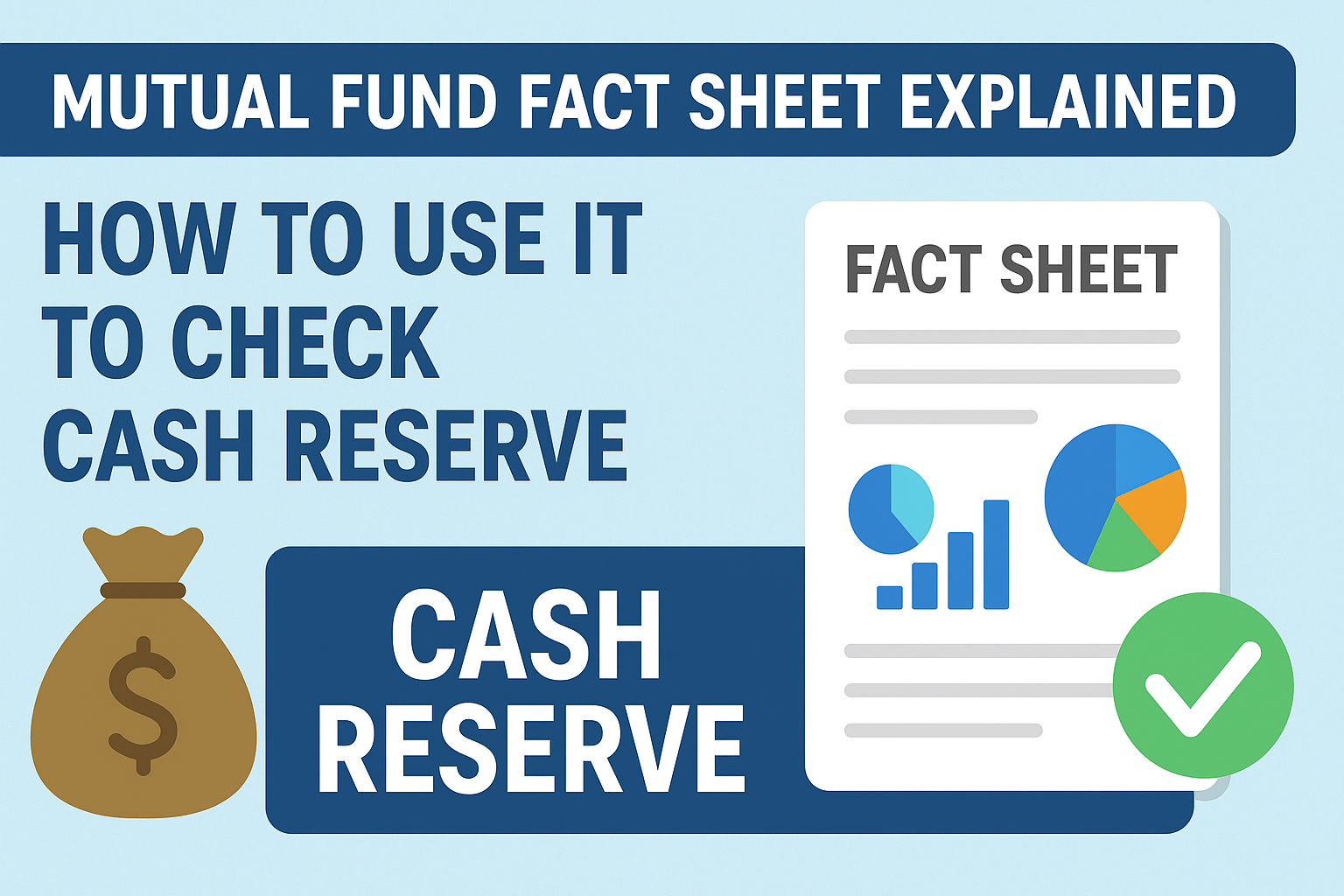What is a Fact Sheet and How to Use it for Understanding Cash Reserve in Mutual Funds?
Introduction: Why Mutual Fund Fact Sheet Matters
When you invest in mutual funds, you often hear about a “fact sheet.” But what exactly is it? A mutual fund fact sheet is like a report card of the fund. It tells you important details about the fund’s performance, holdings, strategy, and even the cash reserve it keeps.
Understanding the fact sheet helps you make smart decisions, especially during adverse market conditions when risks are high.
What is a Fact Sheet in Mutual Funds?
A fact sheet is a simple document released every month by the fund house. It contains:
-
Fund details like name, type, and objective
-
Portfolio holdings (stocks, bonds, cash)
-
Performance history
-
Expense ratio and risk factors
-
Cash reserve percentage
Think of it as a one-page summary that tells you how healthy and balanced a mutual fund is.
Why Cash Reserve in Mutual Funds is Important
Cash reserve is the portion of money that a fund keeps aside in liquid form instead of investing fully in stocks or bonds. This helps the fund:
-
Handle sudden redemptions by investors
-
Face volatility during market crashes
-
Maintain liquidity for quick buying opportunities
In simple words, cash reserve acts like a safety cushion for the fund and indirectly for you.
How to Spot Cash Reserve in a Fact Sheet
If you look at the portfolio section of a mutual fund fact sheet, you will see how the total money is divided. For example:
-
90% in equities (stocks)
-
8% in debt securities
-
2% in cash reserve
This small number tells you how much money the fund has kept safe as cash.
How Cash Reserve Helps in Adverse Market Conditions
When markets fall sharply, many investors panic and withdraw money. Funds that have a good cash reserve ratio can handle these redemptions smoothly.
Also, during market crashes, fund managers use the cash to buy quality stocks at low prices. So, in a way, cash reserve not only protects but also creates an opportunity.
Example: Using Fact Sheet for Cash Reserve Analysis
Imagine two equity mutual funds:
-
Fund A: Cash reserve 1%
-
Fund B: Cash reserve 7%
If markets crash tomorrow, Fund B will be in a better position to handle the situation. It has more liquidity to meet investor withdrawals and buy stocks at lower levels.
How Much Cash Reserve is Good?
There is no fixed rule. For equity funds, 1–5% cash is common. For debt funds, it can be higher. The right level depends on the fund’s style, market condition, and the manager’s strategy.
Other Things to Check in a Fact Sheet
Along with cash reserve, look for:
-
Top holdings
-
Past performance
-
Risk grade
-
Asset allocation
These factors together give a clear picture of the fund’s health.
Benefits of Reading a Fact Sheet Regularly
-
Keeps you updated about your investment
-
Helps in comparing funds easily
-
Protects you from blind investing
-
Builds confidence during tough times
How Investors Can Use This Information
As an investor, you don’t need to be an expert. Just check the cash reserve percentage in the fact sheet before investing. If you see a fund always keeps zero or very low cash, it may struggle during sudden market stress.
Common Misconceptions About Cash Reserve
-
Myth: Higher cash always means safer fund.
-
Truth: Too much cash means the fund is not fully invested, which may lower returns. Balance is key.
Cash Reserve and Investor Confidence
When you know your fund has a proper cash reserve, you feel more secure. You can stay invested calmly even when the market is shaky.
Should Cash Reserve Be Your Only Criteria?
No. Cash reserve is important, but don’t judge a fund only on this. Look at performance, expense ratio, fund manager’s track record, and risk level too.
Conclusion: Fact Sheet as Your Investment Compass
A mutual fund fact sheet is not just numbers on a page. It is your compass for safe investing. By checking the cash reserve levels, you can understand how prepared the fund is for adverse market conditions.
Smart investors always use fact sheets as a guide before putting money in. It is the simplest yet most powerful tool for building long-term wealth.
FAQs
Q1: What is the main purpose of a fact sheet?
It gives you a summary of a mutual fund’s portfolio, performance, and risk factors.
Q2: How often is a mutual fund fact sheet updated?
Usually every month.
Q3: Can cash reserve protect my investment fully?
Not fully, but it reduces risk during volatility.
Q4: Do all mutual funds keep cash reserves?
Yes, but the percentage varies from fund to fund.
Q5: Is high cash reserve always good?
No. Too much cash means less money is invested, which may lower long-term returns.
![]()



